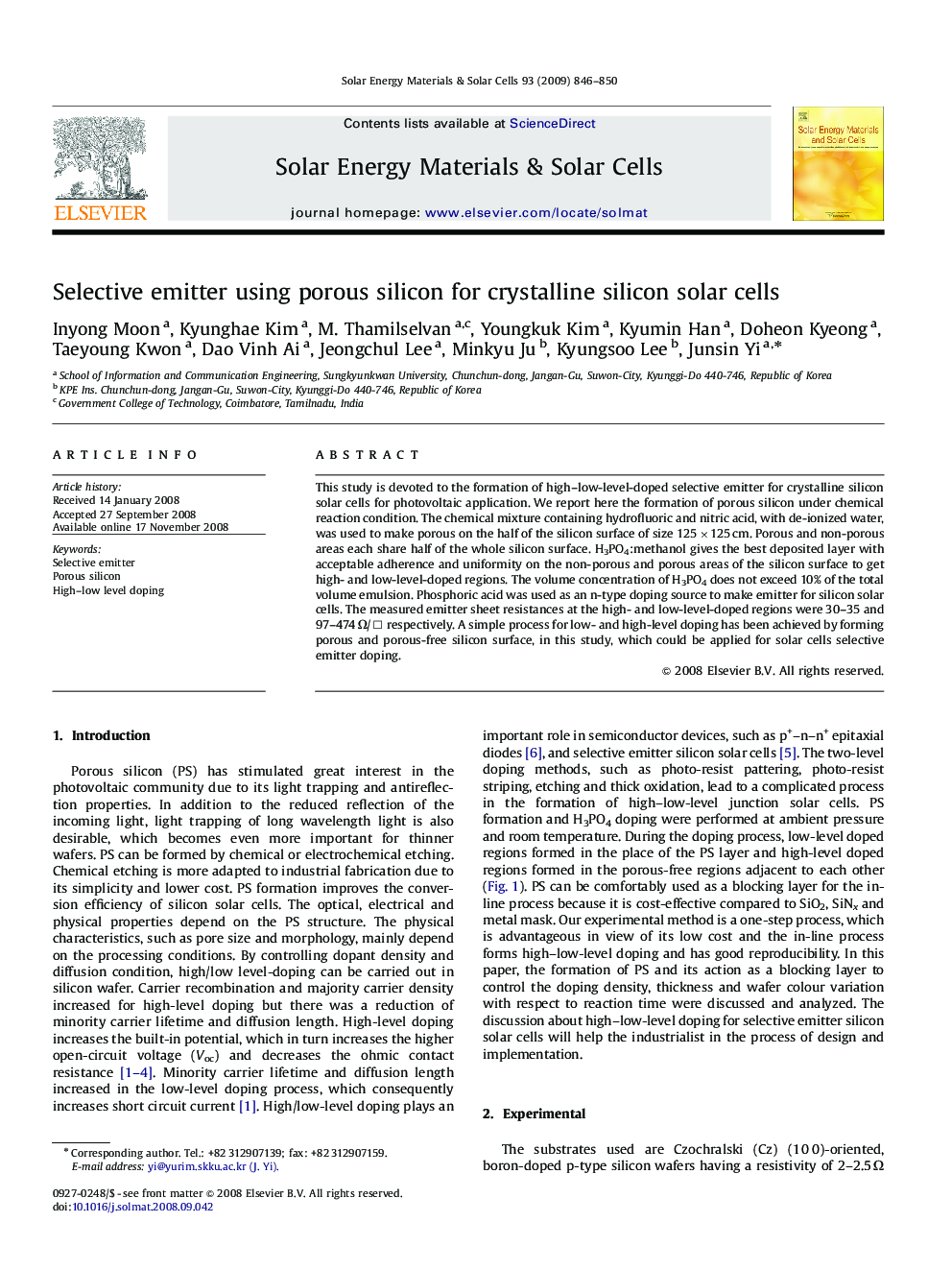| Article ID | Journal | Published Year | Pages | File Type |
|---|---|---|---|---|
| 79967 | Solar Energy Materials and Solar Cells | 2009 | 5 Pages |
This study is devoted to the formation of high–low-level-doped selective emitter for crystalline silicon solar cells for photovoltaic application. We report here the formation of porous silicon under chemical reaction condition. The chemical mixture containing hydrofluoric and nitric acid, with de-ionized water, was used to make porous on the half of the silicon surface of size 125×125 cm. Porous and non-porous areas each share half of the whole silicon surface. H3PO4:methanol gives the best deposited layer with acceptable adherence and uniformity on the non-porous and porous areas of the silicon surface to get high- and low-level-doped regions. The volume concentration of H3PO4 does not exceed 10% of the total volume emulsion. Phosphoric acid was used as an n-type doping source to make emitter for silicon solar cells. The measured emitter sheet resistances at the high- and low-level-doped regions were 30–35 and 97–474 Ω/□ respectively. A simple process for low- and high-level doping has been achieved by forming porous and porous-free silicon surface, in this study, which could be applied for solar cells selective emitter doping.
